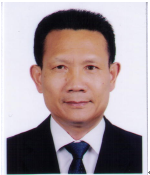| 个人简介 | |
|---|---|
 Prof. Zheng-Ming Huang School of Aerospace Engineering & Applied Mechanics, Tongji University, China |
|
| 标题: Prediction of Composite Failures | |
| 摘要: All composite failures can be classified into strength type and damage type failures. When the fiber is stiffer and stronger than the matrix, all damage type failures are resulted from matrix failures. A damage type failure or a strength type failure with a damage occurred earlier is less predictable with the current phenomenological strength theories, which need measured strengths of the composite. This is because no standard exists for measuring a damage type failure load, implying that a measurement is less believable even though it is achievable. In other words, any type composite failure can be made only through a micromechanics approach. However, a micromechanical prediction of a composite failure is generally inaccurate or even untrue. The reason is that the internal stresses in the fiber and matrix by a micromechanics theory must be converted into true values before a failure detection can be made against strengths of the constituents. How to achieve the conversion is shown in this work and prediction of composite failures is demonstrated. | |
| 简介: Zheng-Ming Huang got his MS degree in Solid Mechanics and PhD degree in Materials Engineering. He developed a unified constitutive theory, Bridging Model, for composites. Based on it, more than 200 publications have been achieved by other researchers over the world. He has found that the homogenized internal stresses in the fiber and matrix of a composite by a micromechanics theory must be converted into true values before a failure assessment can be made, and a systematic theory for converting the homogenized stresses into the true ones has been established by him. He is the author/co-authors of 4 books, more than 200 journal papers, and 22 patents. One of his papers has gotten SCI citations of more than 5,400 times. He was awarded a Yangtze River Scholar professorship position in solid mechanics by the Ministry of Education of China in 2002. | |
